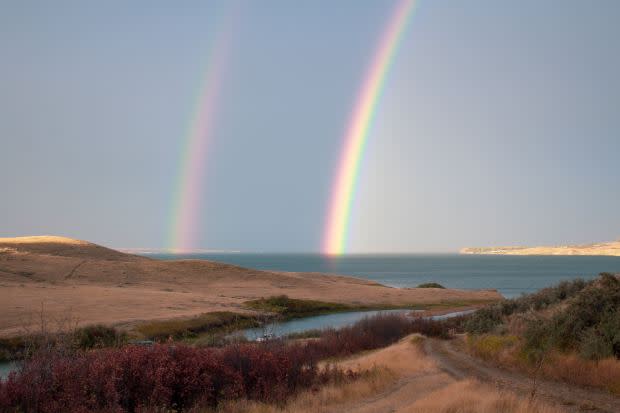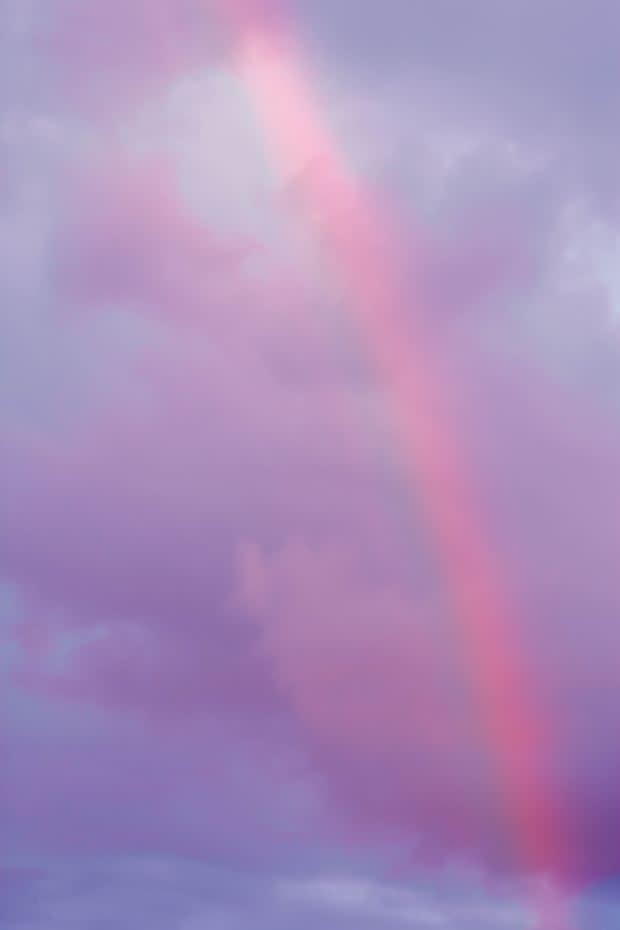What Are the Colors of the Rainbow? Here's a Simple Trick To Remember Them All
There is nothing more beautiful in the sky than a colorful rainbow after a storm. Sometimes we catch just a glimpse and other times the colors are vivid and bright. It can be hard to tell exactly how many hues there are in the rainbow or to distinguish between all of the individual colors—this is because the amount of water droplets in the air has an effect on the vividness. The more water in the air, the more vivid the colors will be. Even though we don't always see all of the colors, there are actually a total of seven colors that are always in the same order. Since they aren't always all visible to the eye, there is a simple trick for remembering the colors of the rainbow.
Regardless of remembering the colors of the rainbow, just seeing one is enough to put a smile on your face. We all tend to find it awe-inspiring when we look to the sky and see things like an eclipse, a blood moon or an asteroid. A rainbow, even though more common, is no different. There is so much beauty and wonder in the color and lights around us. Here is everything that you need to know about rainbows including how to remember the colors.
Related: 150 Rainbow Quotes to Brighten Your Mood and Add Color to Your Day
What Are the Seven Visible Colors of the Rainbow?
Although not all colors in a rainbow are always visible to the eye, there are a total of seven colors that make up a rainbow. The colors are visible when light (the sun) enters a prism (water drops). The spectrum of colors is made up of different wavelengths, from the light, with red having the longest wavelength and violet having the shortest. So, basically, this band of colors is formed by the reflection and refraction of the sun’s rays inside raindrops:
red
orange
yellow
green
blue
indigo
violet

Simple Trick For Remembering the Order and Colors of the Rainbow
The order of colors will always be the same in a primary rainbow. There are a couple of ways to remember the order—one way is to use the acronym for the colors as a way to remember. If you can memorize ROYGBIV, you can then apply the colors for each initial. It may be easier to break it up a little. Instead of the full acronym, think of it as a person named Roy G. Biv.
However, if the acronym is still too hard to remember, many people find it easier to come up with a sentence to memorize instead. For instance, "Richard of York gave battle in vain" is one sentence that may help you to recall the acronym and order of colors.
What Are the Different Types of Rainbows?
1. Primary Rainbow
A primary rainbow is a rainbow that we typically see. It is visible when light from the sun shines on a screen of water drops in the air. The size of the water drops will determine which bands of colors are visible. Depending on the amount of water present, sometimes only a section of the arc is visible.
2. Secondary Rainbow

A secondary rainbow is a rainbow that appears outside a primary rainbow. It's fainter and the colors are reversed because it is a reflection of the primary. This means that red is on the bottom and violet is at the top. However, violet is usually not visible in a secondary rainbow.
3. Supernumerary Bow
Supernumerary rainbows occur inside a primary rainbow. This happens when the raindrops are large or over one mm in diameter. Because of the size, the rainbow pattern repeats into multiple arcs.
4. Monochrome Rainbow

Monochrome rainbows are typically just one color: red. They usually happen at sunrise or sunset when the light from the sun has to travel the greatest distance. Since red has the longest wavelength, it is the only color that appears.
5. Multiple Rainbows
Rarely, you may see multiple rainbows that occur at the same time. Usually, there will be one primary rainbow that is more vivid than the others. However, all of the rainbows have the same color pattern with red at the top and violet at the bottom.
6. Lunar Rainbows or Moonbows
A lunar rainbow is what appears when moonlight shines on the water droplets instead of the sun. Even though you may see all of the colors it is more likely that you would just see a white bow since the moonlight is not nearly as strong as the sun.
7. Fogbows (Ghost Bows)
Similar to moonbows, the fogbow is a white rainbow that appears in the fog or a cloud. It most often goes undetected.
Related: Cloudy Day? No Problem! 19 Best Vegetables and Plants To Grow in the Shade
Why Can't We Always See All of the Colors in a Rainbow?
There are various factors that will cloud our view of a rainbow. The amount of water drops in the air is a big factor. If there is just a thin mist of water, the rainbow will look faint and it will be harder to distinguish the separate colors. Also, if the sunlight or moonlight isn't strong enough, the rainbow will be harder to see.
What Is the Hardest Color To See in a Rainbow?
The hardest color to see in a rainbow is indigo. Since indigo falls between blue and violet, it's really hard to distinguish this darker blue.
How Rare Is a Double Rainbow?
It may seem unique, but a double rainbow is actually fairly common. When the sun is low in the sky, it's much more likely that you could see a double rainbow. This is because the way the light is angled could cause the sun's rays to be reflected twice in the raindrop.
What Does the Bible Say About the Rainbow?
The first time a rainbow appeared in the sky was after the flood in Genesis. It was a symbol of the covenant God made with all living creatures that he would never again bring a universally destructive flood that would destroy all life.
Next Up: 17 Best Rain Boots For Women You'll Want To Make a Splash In!